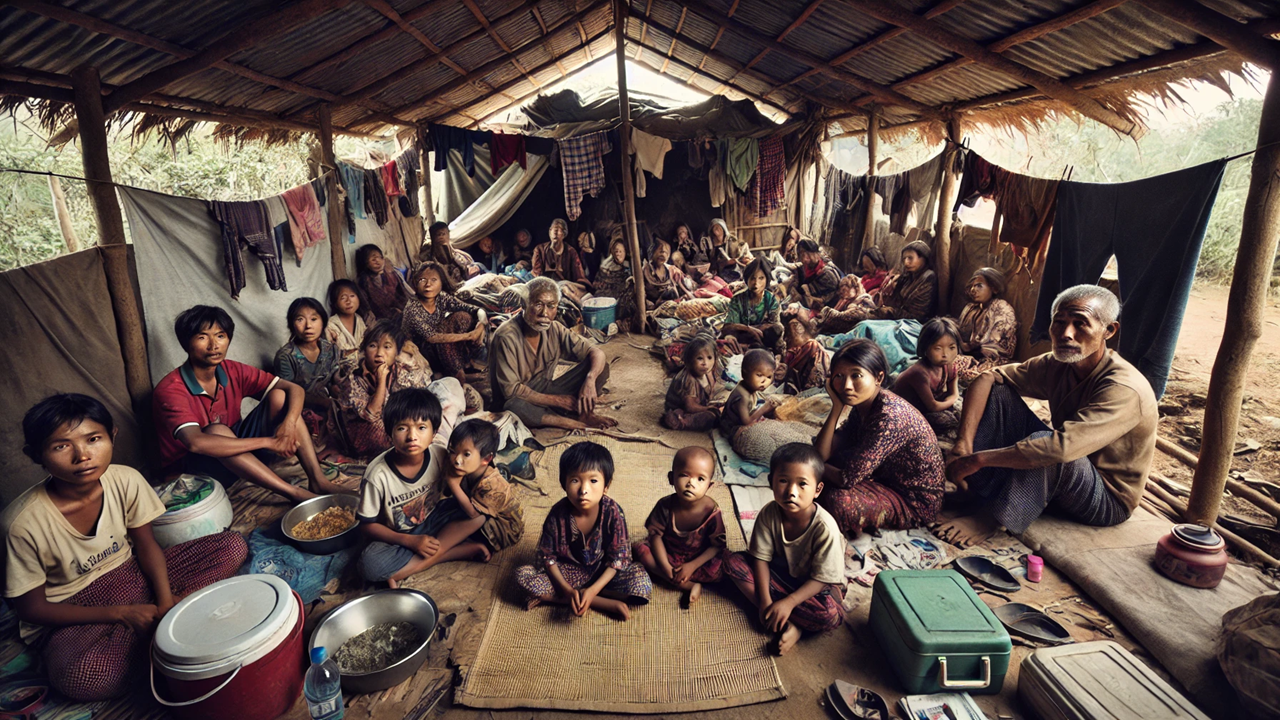Caught in Crisis: The Struggles of Myanmar’s Internally Displaced
This article highlights the challenges faced by Myanmar's internally displaced persons (IDPs) following the 2021 military coup. Based on the World Bank report "Populations in Peril: Decoding Patterns of Forced Displacement in Myanmar," it details the living conditions, educational barriers, health issues, and unemployment struggles of IDPs, emphasizing the urgent need for targeted interventions and support.

In the aftermath of Myanmar's 2021 military coup, the country's internally displaced persons (IDPs) face unprecedented challenges. A recent report by the World Bank, "Populations in Peril: Decoding Patterns of Forced Displacement in Myanmar," sheds light on the plight of these vulnerable populations. Utilizing data from the 2023 Multi-Sectoral Needs Assessment (MSNA) survey, the report reveals the dire living conditions and ongoing struggles of IDPs in Myanmar.
Endless Displacement and Insecurity
The coup has triggered a wave of forced displacement, pushing families from their homes multiple times. On average, newly displaced IDPs reported experiencing 5-6 displacement events between 2021 and 2023. These families, often from rural areas, are forced to seek shelter within the same township, frequently in planned settlements managed by community-based organizations.
IDPs in Myanmar are not just numbers; they are families torn apart by conflict. Single-parent households, disproportionately female-headed, are a common sight among the displaced. These families face heightened vulnerability due to the loss of male family members, who often succumb to the violence. These households struggle to meet their basic needs with more children to care for and fewer earning members.
Living in Limbo: Shelter and Identification Challenges
The living conditions for IDPs are grim. Many reside in makeshift shelters with poor-quality materials, exposing them to the elements and exacerbating their vulnerability. The lack of essential identification documents further complicates their lives, restricting their access to public services and limiting their mobility. Checkpoints and security measures often trap IDPs in their precarious situations, making it difficult for them to seek employment or access healthcare.
One of the most alarming risks IDPs face is landmine contamination. While physical harm from these explosives is less common, their presence severely disrupts livelihoods, limiting agricultural activities and other forms of employment. This ongoing threat looms over the displaced communities, adding to their already substantial burdens.
Education and Health: Barriers to a Better Future
The impact of displacement extends to education and health. School dropout rates among IDPs are three times higher than those of non-displaced households. While overall enrollment rates have improved, IDP children are more likely to attend informal education centers, which often lack the resources to provide a comprehensive education. This gap is particularly pronounced among older children, who are likelier to drop out before high school.
Healthcare is another critical issue. IDPs rely heavily on community-based health services, but affordability remains a significant barrier. Although urban IDPs have better access to healthcare than their rural counterparts, the overall picture is bleak. Many IDPs face difficulties in paying for health services, further exacerbating their vulnerability.
The Struggle for Livelihoods
Unemployment is rampant among IDPs, with rates three times higher than those of non-displaced populations. Male IDPs are particularly affected, with many struggling to find work in urban areas. The challenging regulatory environment and the presence of landmines create significant barriers to employment. Without proper identification documents, IDPs find it even more difficult to secure jobs.
The economic situation for IDPs is dire. They are among the poorest households in Myanmar, with average monthly earnings significantly lower than those of non-displaced families. Most IDPs rely on casual labor, agriculture, and humanitarian assistance for their livelihoods. Those in unplanned settlements face the highest levels of food insecurity and are forced to adopt emergency-level coping strategies.
Moving Forward: A Call for Action
The World Bank report concludes with a call for targeted interventions to support Myanmar's IDPs. It emphasizes the need for better data collection, targeted assistance for the most vulnerable groups, and efforts to address the country's broader economic and security challenges.
Improving the lives of IDPs requires a coordinated approach, involving government agencies, international organizations, and community-based groups. Ensuring access to quality education, healthcare, and stable employment opportunities is crucial for breaking the cycle of poverty and displacement.
As Myanmar continues to grapple with the aftermath of the coup, the plight of its internally displaced populations remains a pressing humanitarian concern. The findings of this report highlight the urgent need for concerted efforts to support these vulnerable communities and pave the way for a more stable and prosperous future.
- FIRST PUBLISHED IN:
- Devdiscourse
ALSO READ
Healthcare Services Hit Amid Protest Over Doctor's Murder in West Bengal
USAID Strengthens India's Health Outcomes through Local Partnerships
Malawi’s Education Overhaul: How Targeted Interventions Are Closing Learning Gaps
Diabetes and Mental Health: The Unseen Connection
There were discussions on trade, economic issues, defence, pharmaceuticals, agricurture, education: Jaishankar on Modi-Zelenskyy talks.










